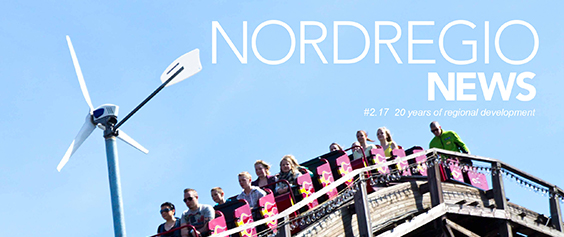In 2009, Twitter was three years old and had roughly 20 million global users – compared to nearly 350 million today. This is just one example of the rapidly evolving digital age, which has impacted on how Nordregio communicates its work, and even how we do research. It takes more time and effort now, to feed all relevant channels and contribute to important stakeholder networks. But it also pays off as we have become more relevant for our target groups and have gotten more projects.
Eight years ago, Nordregio’s communication approach was very different from today. We produced a Journal of Nordregio, available quarterly and in print only – via snail mail. Our research results were mainly communicated in one of three ways: long reports and working papers, maps, and conferences or seminar presentations. These were, and still are, tried and tested approaches to communication – especially for academic audiences. But due to the growth of digital media, with an ever-increasing information flow, the evolving competition for peoples’ valuable time and attention has meant that our communication work has had to evolve as well. About five years ago, Nordregio began producing policy briefs. These summarize our project work and present results and policy implications for our main target audience – Nordic practitioners working in urban and regional policy and planning. Around the same time, the Journal of Nordregio was replaced by the online-based Nordregio News, which is distributed four times per year to over 2,000 recipients – in a more reader friendly format. Not that all recipients open it but we keep in touch – and readers can choose articles of interest.
Our digital efforts took us into a new dimension of mapping when we launched NordMap in early 2015. NordMap provides a digital collection of our maps and the ability for users to see e.g. demographic changes occur on screen in time play, find comparable regions or municipalities across the Nordics, and create customized maps for downloading or sharing on social media. Usability was a big challenge and still is as we now work on the 3.0 version. We have also learned that maps go viral if they are topically timely. On April 28th, 2015 Nordregio made its first tweet. 641 tweets later we have 704 followers, and our “Maps of the moment” have inspired some lively Twitter discussions. As the adage goes, better late than never!
There is no doubt that digital forms of communication such as social media will continue to advance and influence our work in the future. There is also a growing demand for researchers to be communicative and beneficial to the development of society. We will work more to ensure that our research results can be spread through multiple communication mediums simultaneously. For example, we are currently developing a catalogue of good practices about the greening of social housing throughout Europe and globally. As a means of communicating the content by making the catalogue itself as visual as possible, we are using more image-based infographics that can be simultaneously shared via Twitter. These visuals allow us to get detailed messages across within the modern limit of 140 characters or less.
Still, digital communication lacks flesh and blood. It has its limitations when it comes to engaging with stakeholders and facilitating Nordic knowledge exchange and mutual learning – another important Nordregio objective. Hence, we developed a new, annual meeting place for our target groups, Nordregio Forum, in collaboration with the country chairing the Nordic Council of Ministers. It sure takes some stamina to pull it off every year, but we believe it pays off. It is an exercise in providing tangible take-aways for our audience based on knowledge, inspiration and Nordic and international contacts and examples. And we learn and improve the content and outline year by year.
Besides Nordregio Forum, we have increased our presence at recurrent meetings for regional actors, policy-makers and planners across the Nordics, on topics spanning from green growth and smart specialization to rural development, integration and social innovation. This is much supported by our Board. We simply need to be out there and be relevant for these target groups. Improving our presentation skills and workshop facilitation abilities has been part of the plan of becoming more confident hosts or co-host of events, with a broad range of partners: ministries, agencies, other Nordic organizations, NGOs and academia.
We are still researchers, just a bit more communicative. Our broad field of regional studies appears to be somewhat clearer now – as well as our brand and the grand principle of Nordic added value.
This article is part of Nordregio News #2. 2017, read the entire issue here.


